
In thermal power plant, the use of boiler unit which produces steam helps to rotate the turbine to produce electricity. The boiler unit which consists of boiler drum converts feedwater into steam. The three types of boiler drum system are single element boiler drum, two element boiler drum and three element boiler drum. In thermal power plant the three element boiler drum is used. In the boiler drum, during the conversion of feedwater into steam, the level should be maintained and controlled properly. For controlling purpose the PID controller is used and the tuning of controller parameter controller is done manually. In the proposed method PID controller is replaced by adaptive controller where the tuning of controller will be made automatically. Thus the performance of the boiler drum level control system will be improved by three element method.
Boiler is a closed vessel in which water or other fluid is heated. Different types of boilers are there which can generate steam by absorbing heat from another fluid. The vaporized fluid exits the boiler for use in various processes in different heating applications [1]. A boiler or steam generator is employed wherever a source of steam is required.
The steam drum is an integral part of a boiler. The primary function of this drum is to provide a surface area and volume near the top of the boiler where the separation of steam from water occurs [4]. The maintenance of drum level is important. The low level affects the recirculation of water to the boiler tubes and reduces the water to the boiler tubes, which overheats and can cause damage to the boiler tubes. High level reduces the surface area, which leads to water and dissolved solids entering the steam distribution system [3]. Therefore, steam drum water level control is critical to safe operation of the boiler and the steam turbine. As steam pressure changes due to demand, there is a transient change in level due to the effect of pressure on entrained steam bubbles below the steam interface level. As pressure drops, a rise in level, called swell, occurs because the trapped bubbles enlarge. As pressure rises, a drop in level occurs. This is called shrink. There are three basic types of drum level control systems. They are single element, two element and three element drum level control system.
The objective of the drum level control system is to maintain the water-steam interface at the specified level and provide a continuous mass balance by replacing every pound of steam and water removed with a pound of feedwater [5]. In thermal power plants, three element drum is used in the boiler unit to control the feedwater level using PID controller. Due to the slow response and manual tuning in the PID controller, adaptive controller is used which has fast response and automatic tuning.
In single element steam drum level control, it measures level and regulates feed water flow [7] to maintain the level.
Transfer function for steam drum:

Transfer function for valve:

Equation (3) shows the series of process transfer function and valve transfer function

The transfer function [10], from equation (3), the frequency response of gain margin and gain cross over frequency are calculated. A conventional PID controller is used. The tuning method used for conventional PID controller is Ziegler Nichols tuning method. The tuning parameters of PID controller for single element steam drum level control is presented out in Table 1.
In table (1), the tuning parameters of PID controller for single element steam drum level control the proportional gain (kp), integral gain (ki), derivative gain (kd) are calculated using the formulae of Ziegler Nichols tuning method [8].
The simulink model for the 1-element steam drum level control using conventional PID controller is given in Figure 1. The unit step input is considered to set the level in particular point for gradual increase in load. The feedback loop is used to compare the actual level and set level. The PID controller controls feed water[7] valve and maintain the level in the required setpoint. Valve saturation is considered, as steam drum level is to be controlled and level of steam drum is to be maintained between upper level of the drum and lower level of the drum.
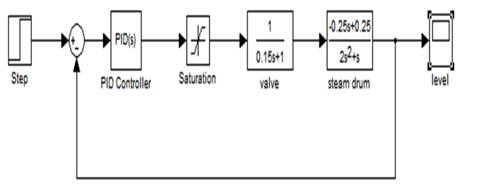
Figure 1. Simulink for Single Element Steam Drum Level Control Using PID Controller
In order to control the effect of steam load disturbance, feedforward controller is used. Combination of feedback controller along with feedforward controller is used for the two element drum level control.
Transfer function of feedforward controller[6]:



Table 2 the tuning parameters of PID controller for two element steam drum level control [10] the proportional gain (kp), integral gain (ki), derivative gain (kd) are calculated using the formulae of Ziegler Nichols tuning method [8].

Table 2. Tuning Parameters of PID Controllers for Two Element Steam Drum Level Control
Figure 2 is the simulink model for the two element steam drum level control using conventional PID controller. In this feedback and feed-forward controller is used.
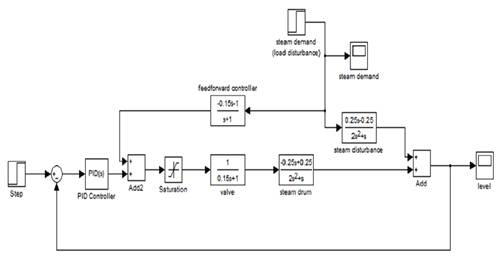
Figure 2. Simulink for Two Element Steam Drum Level Control using PID Controlle
The feedback controller, compares the actual and set level. The unit step input is considered to set the level in particular point for gradual increase in load and the feedforward is used to calculate the disturbance before the process. The transfer function of feed-forward controller in equation (6) is calculated by series of transfer function in valve and steam drum.
Transfer function of steam disturbance

According to the drum level control [9] the steam disturbance is given equation (7). Valve saturation is considered, as steam drum level is to be controlled and level of steam drum is to be maintained between upper level of the drum and lower level of the drum.
In three element boiler drum level control, cascade controller and feedforward controller are used. Conventional PID controller is used as primary controller and Proportional Integral (PI) controller is used as secondary controller. Tuning of primary controller is done using Ziegler Nichols tuning method and tuning of secondary controller is done using auto tuning function in simulink. The secondary controller parameters are found out using auto tuning[8].
Transfer function of feedforward controller = Gff1(s).
Transfer function of secondary loop:

G(primary) = Transfer function of secondary loop * Transfer function of steam drum
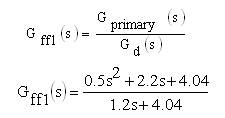
This transfer function is not efficient, as the number of zeros is more than the number of poles. Hence a pole is added to make it proper transfer function. Let pole at s = -1 is added[6].

In Table 3. the tuning parameters of PID controller for three element steam drum level control the proportional gain (kp), integral gain (ki), derivative gain (kd) are calculated using the formulae of Ziegler Nichols tuning method [8].
Figure 3 is the simulink model of three element steam drum level control with conventional PID as primary controller and PI controller as secondary controller. The unit step input is considered to set the level in particular point for gradual increase in load. The feedwater disturbance is added in secondary loop and steam disturbance is added in primary loop. Valve saturation is considered as the level of steam drum is to be maintained between upper level of the drum and lower level of the drum.
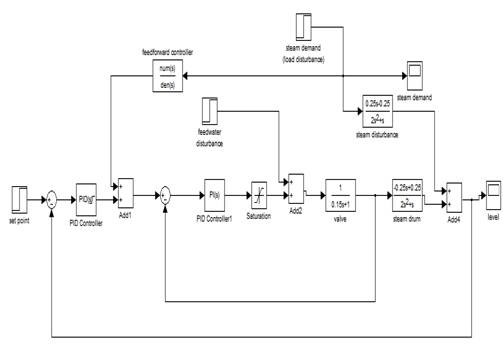
Figure 3. Simulink for Three Element Steam Drum Level Control using PID Controller
The response of Single Element Drum Level Control with PID controller at the set point of 1cm results in the settling time of 41.53 Seconds as shown in Figure 4. The time domain specifications for single element drum level control with PID controller for small boilers having relatively high storage volumes and slow changing loads shows slow response.
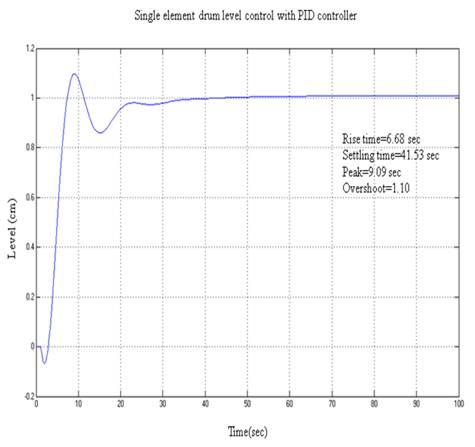
Figure 4. Response for Single Element Drum Level Control with PID Controller
Table 4 shows time domain specifications for Single Element Drum Level Control with PID Controller. The rise time, settling time, overshoot, and peak time are calculated.

Table 4. Time Domain Specification For Single Element Drum Level Control With PID Controller
The response of two element drum level control with PID controller at the set point of 1cm results in the settling time of 70.9 Seconds as shown in Figure 5.
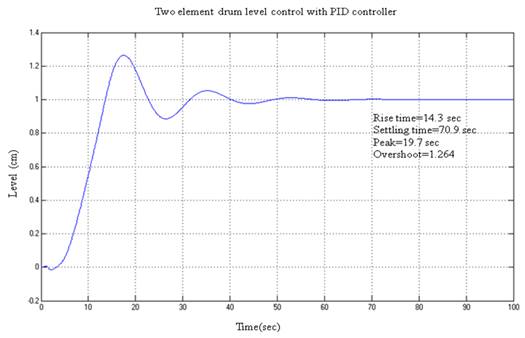
Figure 5. Response for Two Element Drum Level Control with PID Controller
It is observed from Figure 5 shows that time domain specifications for two element drum level control with PID controller shows the response which can be used for intermediate boilers as well as large boilers because of large load changes.
In Table 5 time domain specifications for two element drum level control with PID controller are shown. The rise time, settling time, overshoot, and peak time are calculated.

Table 5. Time Domain Specification For Two Element Drum Level Control With PID Controller
Three element drum level control with Proportional Integral Derivative Controller at the set point for the level as 1cm results in the settling time of 29.82 seconds as shown in Figure 6.

Figure 6. Response for Three Element Drum Level Control with PID Controller
It is observed from Figure 6 that time domain specifications for three element drum level control with PID controller shows the output response that can be used in case of wide and rapid load changes.

Table 6. Time Domain Specification For Three Element Drum Level Control With Pid Controller
In table 6, time domain specification for three element drum level control with PID Controller are shown. Figure 6 shows the rise time, settling time, peak time, overshoot using three element drum level control when there are rapid load changes.
Comparison of single, two, three element drum level control with PID Controller are shown in Table 7. It is observed that whenever there are rapid load changes three element drum level control gives better response as given in Table 7.
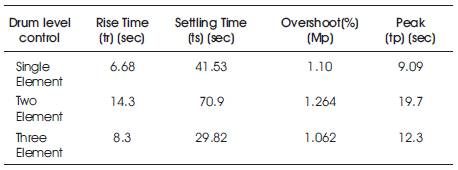
Table 7 Comparison Of Single, Two, Three Element Method Using PID Controller
The steam drum level control in boiler has been carried out. A single element steam drum level control of boiler is developed and conventional PID controller is developed. Then, two element steam drum level control with PID controller is implemented which has slower response time and can be used in small and intermediate boilers. Therefore, three element steam drum level control is required for large boilers. In three element drum level control, cascade controller and feed forward controller is used in which PID controller acts as a primary controller and PI as secondary controller. The tuning of controller is done manually using Z-N tuning method. The PID controller gives a high overshoot and high settling time for three element drum level control. In future, the PID controller can be replaced by adaptive controller where the tuning of controller parameters will be done automatically.